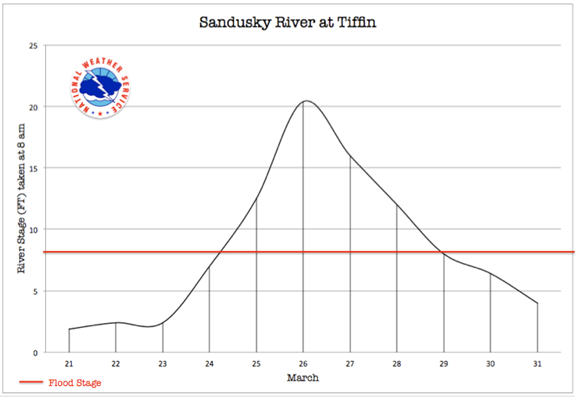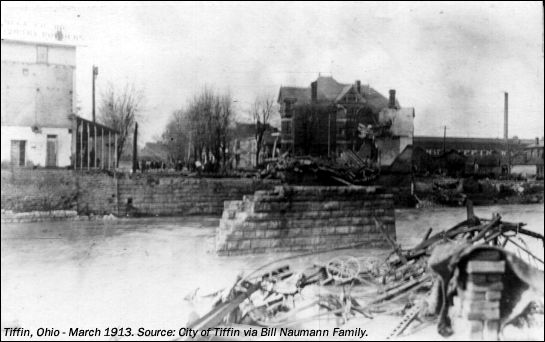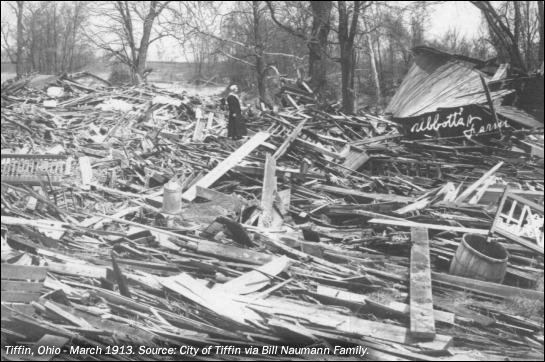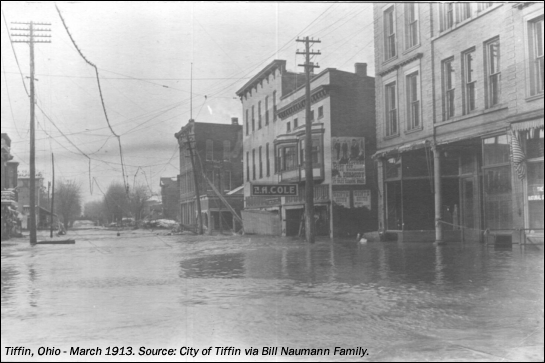The Great Flood of 1913
100 Years Later
Community Profiles: Tiffin, Ohio
| River: | Sandusky |
| Storm Total Rainfall: | 7.97" |
| Known Fatalities: | 19 or 20 |
Timeline
The greatest flood of record in both stage and discharge was the March 1913 flood. The Sandusky River at Tiffin flows through the center of the city from the southwest to the northeast. The river was already at flood stage Monday morning, March 24, but by that afternoon it had risen sharply. By Tuesday the bridges were impassable, and homes and businesses near the river were washed into the river. Bridges collapsed under the pressure of the debris and the strong current. Around 6 a.m. Wednesday morning the river crested, 8 feet higher than any previous flood.
Impacts
For a town with a population of only 12,000 at least 19 known lives were lost, though some estimates put the total closer to 30. Forty-six homes were destroyed, 600 families and an estimated 3,000 or one-fourth of the town was left homeless. Damages estimated at the time amounted to well over $2 million. A majority of the bridges between upper Sandusky and the mouth of the river were destroyed. Homes in low-lying areas were flooded to the second floor. “During that three-day period in Tiffin 46 houses and 2 factories were swept away, 10 factories damaged, 69 places of business heavily damaged, 6 bridges within the corporate limits destroyed, and -- worst of all -- 19 lives lost.” (Source and more images at http://tiffinohio.gov/flood/)



Flood Protection Measures
Bacon's and Water Plant Dams, which are located along the Sandusky River, provide some flood protection within the community. Floodwalls exist in the area that provide the community with some degree of protection against flooding. However, it has been ascertained that these floodwalls may not protect the community from rare events such as the 100-year* flood.
* 100-year flood is old terminology. Agencies are now using the term "1% Flood Level" which is the maximum flood level with a one-percent chance of occurring within any given year.

